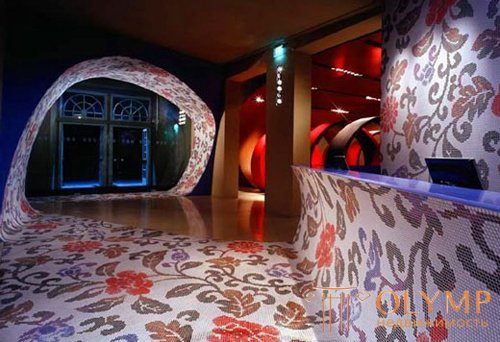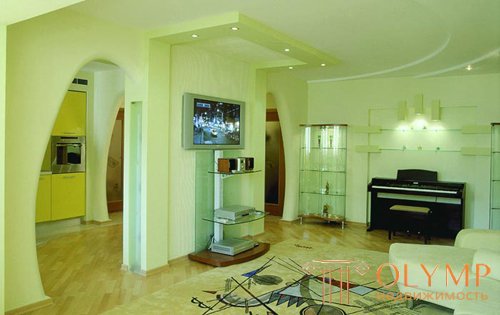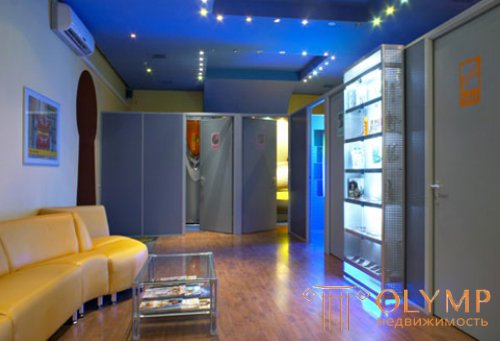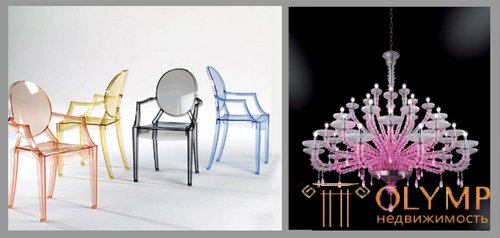
Expressionism (o T lat. Expressio, "expression" ) is an avant-garde trend in European art, developed in the late XIX - early XX century, characterized by a tendency to express the emotional characteristics of the image (s) (usually a person or a group of people) or the emotional state the artist. Expressionism is represented in a variety of art forms, including painting, literature, theater, cinema, architecture and music.
The very name of expressionism style suggests an emotional (in a positive sense, of course) interior. The most important thing when creating a style is expressionism in the interior is to impress people in the room, and it does not matter whether the impression is positive or negative.
Expressionism is characterized by an underlined emotional expressiveness of the composition, sometimes achieved by sharpness, grotesque, deliberate deformation of the usual architectural forms, or even rejection of them with the formation of the composition according to the principles of sculpture.

Style Expressionism in the interior, photo
The main elements of expressionism style:
The word expressionism comes from the Latin expressio, which means "expression". This trend in European art actively developed from the end of the 19th to the beginning of the 20th century mainly on German and Austrian soil. Having emerged in the visual arts (the Most group, 1905; The Blue Rider, 1912), he gained his name only in 1911 after the name of a group of French artists who appeared at the exhibition of Berlin’s Secession. At the same time, the concept of “expressionism” spread to literature, cinema and related areas of creativity as a system designation, in which, as opposed to naturalism and aesthetism, the idea of direct emotional impact, an underlined subjectivity of the creative act, increased affectation, thickening of pain, scream, Thus, the principle of expression prevails over the image.
Expressionism in architecture is a branch of a general expressionistic trend in art, uniting literature / F. Kafka /, music / A. Scriabin, A. Schoenberg, G. Mahler /, cinema / R. Vine, R. Reiner /, visual arts / V. Kandinsky, K. Kollwitz, P. Klee /. If in literature and music expressionism was formed at the very beginning of the century, in architecture its first bright manifestations refer to 1919-1922 rr.
They initially manifest themselves in the layout of scenographic spaces, especially in the interiors of R. Wien's films: dynamic scenery with unexpected and mysterious sources of light, sloping walls and cascades of staircases leading nowhere. All this created an emotional, semi-mystical atmosphere of action. After the world-wide success of R.Vine’s film “The Cabinet of Dr. Caligari” / 1920, this term in the art of set design was honored with the term “Caligarism”.
The symbol of expressionism in architecture was the building of the astrophysical laboratory in Potsdam, built by E. Mendelson in 1921, better known as “Einstein Tower”. It was designed as a kind of building-sculpture with plastic monolithic reinforced concrete forms, almost excluding orthogonal mates. In the architecture of the tower, its volumetric shape clearly prevails over the solution of internal spaces. Another vivid example of the building of the sculpture of the period of early expressionism is the “Gotheneum” in Darnah / 1923-1928 / - the building of the headquarters of anthroposophists. The author of the project was not the architect, but the philosopher R. Steiner - the founder of the anthroposophical school.
Expression implies liveliness. This style is a continuation of avant-garde, but more soulful, soft. The interior of expressionism gives ease, picturesque thoughts. This is achieved not by reckless fun, a lot of frivolous pictures, but by harmony of decisions, a thoughtful combination of colors and paints .. The most suitable colors for such a house are juicy, bright and faded, blurred. Red, blue, green, lemon. The main thing - to avoid heavy and deep tones.

Style Expressionism in the interior, photo
In expressionism, it is important to create a mood. Try to call for help lighting: in parallel with the "central" light, place the lighting in the room in the form of unusual sconces and floor lamps, giving a soft light. Looks great color lights - greenish, pinkish. Lamp shades are made of light materials of light colors - woven, plastic, from fine porcelain or fabric.
Not the last role in the design of the apartment in the style of expressionism are the curtains - bright, attracting attention. After all, the interior in the style of expressionism, this is the case when you can safely decorate the window with red, lemon, purple curtains. There is no place for frilly ruffles and frills, folds and voila.

Style Expressionism in the interior, photo
Plastic and cloth blinds, light short curtains - that's what you need if you have chosen expressionism style. The original shape of the curtains is welcome. Remember also that for such curtains is not worth taking deep heavy tones. Blinds that create the impression of lightness and light will look good.
In expressionism, you can give a flight of fantasy by combining, for example, African decor with hi-tech elements. Yes, yes, it would seem incompatible styles, perfectly combined in expressionism. Next to the glass table and the wicker chair will look great statuette in the form of a native idol and a large plasma panel.

Style Expressionism in the interior, photo
In the expressionist bedroom you can focus on the alternation of colors. For example, a wooden bed of light brown color is filled with a green veil and striped white and red pillows. So, for creating an expressionist-style interior:
Expressionism is rather a youth style that conquers with its dynamics and energy.
In expressionism, you should not allow the appearance of dark, heavy tones - the whole style is built on a bright, good mood. This style is for those who are tired of the usual atmosphere and want something bright, original and exotic.
Что бы оставить комментарий войдите
Комментарии (0)